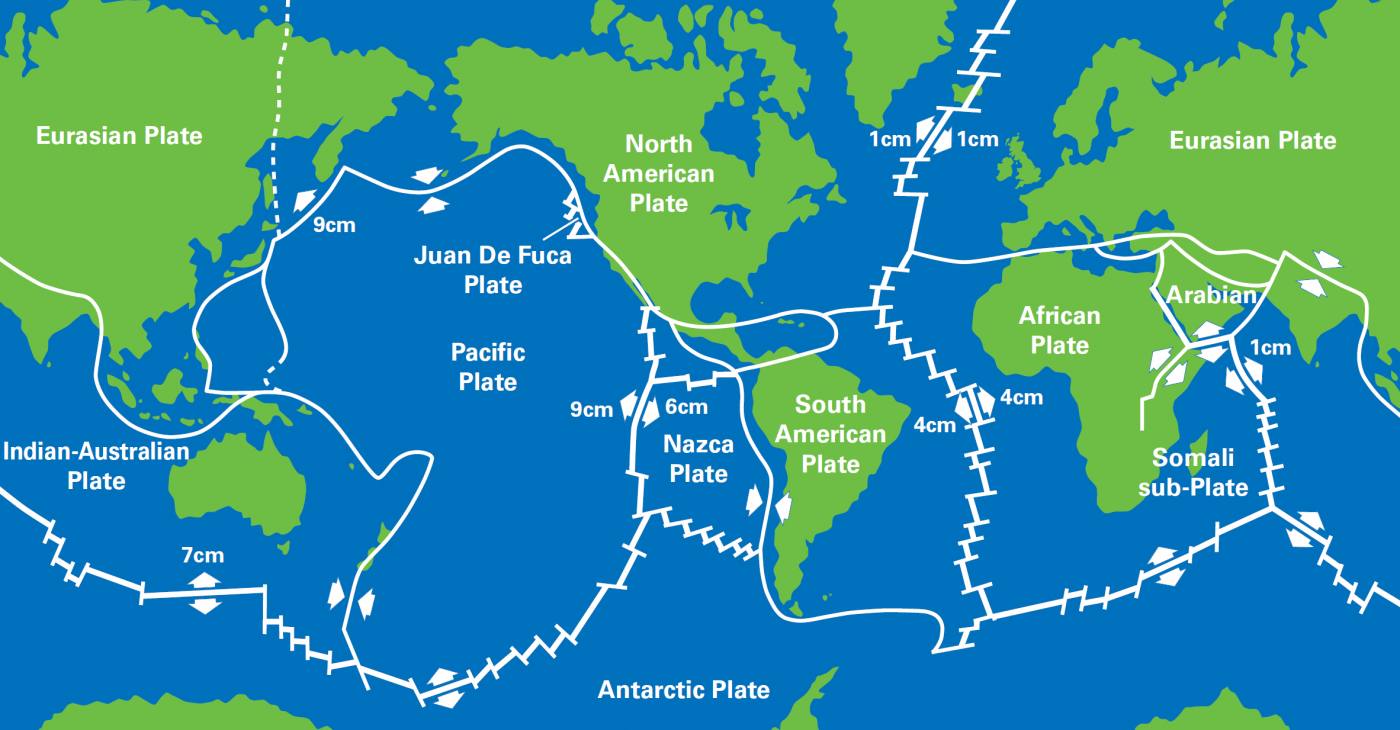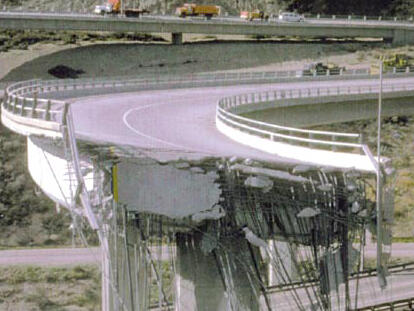
Earthquakes are natural seismic events resulting from the sudden release of energy in the Earth's crust, primarily due to the movement of tectonic plates along fault lines. These movements generate seismic waves that can cause significant ground shaking and various forms of damage.
Tectonic Plates and Faults

The Earth's lithosphere, which is its outer layer, is divided into approximately 15 major tectonic plates. These plates float on the semi-fluid asthenosphere beneath them and interact at their boundaries, where stress can accumulate over time[3]. As tectonic plates continuously move—albeit slowly, typically just a few centimeters per year—they can become 'stuck' at their edges due to friction. This friction prevents the plates from sliding smoothly past one another, leading to an increase in stress along the fault lines[1][2][5].
When the accumulated stress overcomes the frictional forces holding the plates together, a sudden slip occurs, resulting in an earthquake. This violent release of energy propagates in waves through the Earth's crust, manifesting as the shaking we feel during an earthquake[2][7]. The exact point within the Earth where the rupture begins is referred to as the hypocenter (or focus), while the point directly above it on the Earth's surface is known as the epicenter[8].
The Elastic Rebound Theory

The mechanism behind the sudden release of energy in earthquakes is explained by the elastic rebound theory. This theory describes how stress builds up in rocks along a fault line due to continuous tectonic movement. Over time, as stress accumulates, the rocks undergo deformation (bending or stretching). Once the stress exceeds the strength of the rocks, they fracture and snap back to their original shape, resulting in an earthquake[3][9]. This snapping motion produces seismic waves that travel outward from the fault, causing the ground to shake.
Types of Faults
There are three primary types of faults that contribute to seismic activity:
Normal Faults: Occur when the crust is extended, causing one block of rock to drop relative to another. This type of fault is often found in regions experiencing rifting, where tectonic plates pull apart[12].
Reverse (Thrust) Faults: These faults occur when the crust is compressed, pushing one block of rock over another. This is commonly seen in subduction zones where an oceanic plate is forced beneath a continental plate[12].
Strike-Slip Faults: Characterized by horizontal movement, where blocks of crust slide past each other without much vertical movement. The San Andreas Fault in California is a well-known example[12].
Induced Earthquakes

While most earthquakes are natural occurrences related to tectonic activity, human activities can also induce seismic events. For instance, the injection of wastewater from oil production into underground wells has been linked to increased seismic activity. This occurs when the high-pressure fluid alters the stress distribution in the surrounding rocks, potentially triggering earthquakes[4][6]. Although rare, hydraulic fracturing (fracking) can cause earthquakes directly, but it is more common for significant seismic events to be associated with wastewater disposal practices[4][9].
Seismic Waves and Their Impact

The energy released during an earthquake travels through the Earth as seismic waves, which include various types:
P-waves (Primary waves): These are compressional waves that are the fastest and can travel through solids, liquids, and gases.
S-waves (Secondary waves): Slower than P-waves, they can only travel through solids and move by causing particles to oscillate perpendicular to the direction of wave propagation.
Surface waves: These waves travel along the Earth's surface and tend to cause the most significant damage due to their larger amplitude and longer duration[3][7].
The complex interactions of these waves can result in various impacts ranging from minor tremors to catastrophic damage, especially in densely populated areas near the epicenter. Additionally, aftershocks—smaller quakes that follow the main event—can continue to occur for days or even months as the Earth's crust adjusts to the new conditions[12].
Conclusion
In summary, earthquakes arise from the intricate movements of tectonic plates and the sudden release of built-up stress along faults. Understanding the mechanisms of earthquakes, including the types of faults and the role of tectonic plate movements, is crucial for developing strategies to mitigate their impacts. Both natural processes and human activities can influence seismic activity, highlighting the need for continued research and monitoring in earthquake-prone regions.
Get more accurate answers with Super Pandi, upload files, personalized discovery feed, save searches and contribute to the PandiPedia.
Let's look at alternatives:
- Modify the query.
- Start a new thread.
- Remove sources (if manually added).